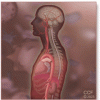Neurology
- Unexplained pathology is not always autoimmune
Our success in understanding well-defined autoimmune diseases may make us too willing to attribute yet-unexplained conditions to autoimmunity simply because they share symptoms.
- Autoimmunity and postural orthostatic tachycardia syndrome: Implications in diagnosis and management
A review of the presentation and diagnostic evaluation, including atypical features that may suggest an alternative diagnosis requiring a more extensive evaluation.
- Guidelines for the management of trigeminal neuralgia
Care pathways for patients with trigeminal neuralgia vary widely. The most recent UK guidelines emphasize the need for evidence-based care plans for multidisciplinary management.
- Reproductive issues and multiple sclerosis: 20 questions
The authors offer answers to frequently asked questions about the management of MS during pregnancy planning, pregnancy, and the postpartum period.
- Myasthenia gravis: Frequently asked questions
Who is at risk? Which tests should be ordered? How does the disease course affect management decisions? What instructions should you give patients? And other questions.
- Myasthenia gravis: An update for internists
Recognizing the spectrum of the disease in patients’ complaints enhances our clinical reasoning skills when faced with the extremely commonly expressed symptom of “fatigue.”
- What are the treatment options for myasthenia gravis if first-line agents fail?
From 5% to 20% of patients may have a suboptimal response or prohibitive adverse effects over a period of a few weeks to 3 months.
- Which patients hospitalized with alcohol withdrawal syndrome should receive high-dose parenteral thiamine?
The authors briefly outline risk factors for Wernicke encephalopathy and when high-dose parenteral thiamine is indicated.
- Central vision loss in a 44-year-old woman
The patient had a wide range of symptoms and comorbidities, resulting in a complicated differential diagnosis. Careful evaluation eventually led to a focus on sexually transmitted infection.


